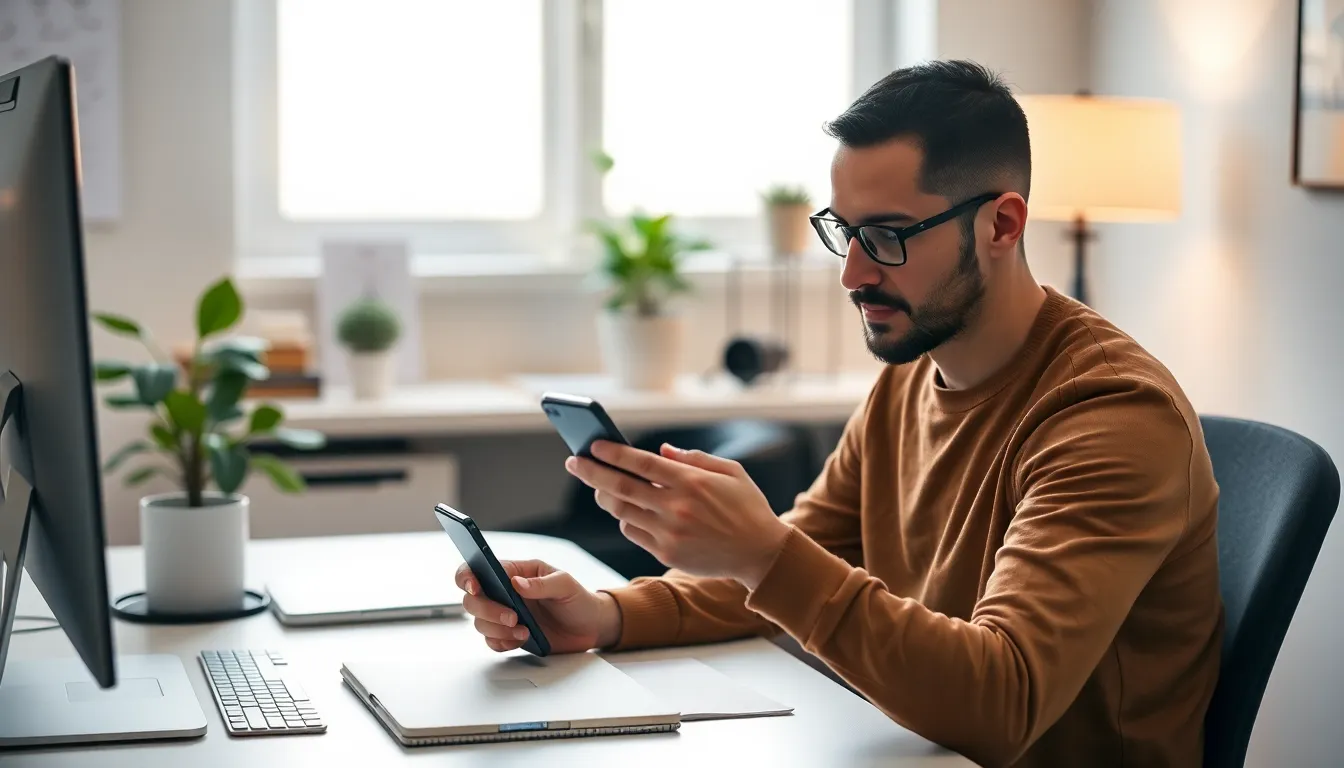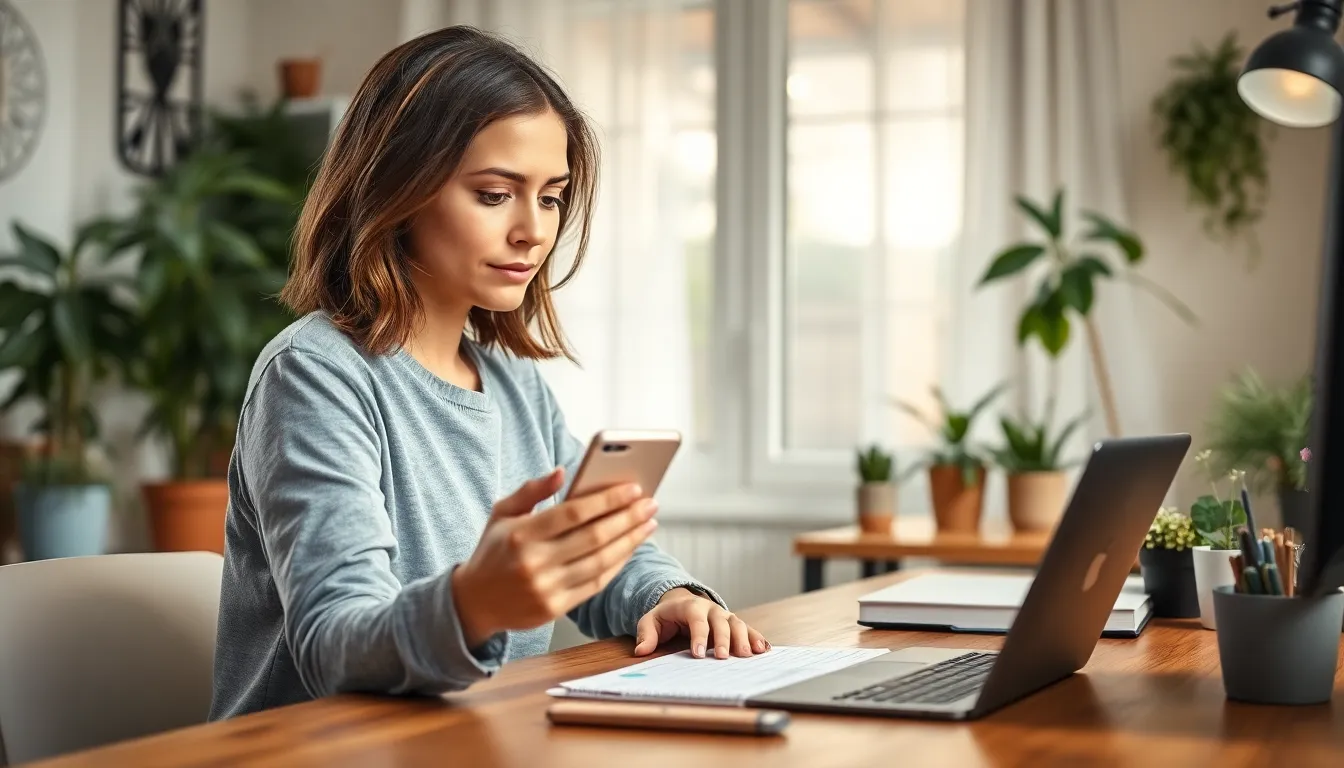Table of Contents
ToggleIn a world where distractions lurk around every corner, keeping focus can feel like a full-time job. With just a swipe, that innocent app for checking the weather can lead to an unexpected rabbit hole of cat videos. If only there were a way to rein in those pesky apps and reclaim precious time. Well, there is!
Limiting access to apps on an iPhone isn’t just a tech-savvy move; it’s a sanity-saving strategy. Whether it’s for your kids or even for yourself, setting boundaries can turn your device from a time-sucking vortex into a productivity powerhouse. Get ready to dive into the clever tricks that’ll help you take back control, all while keeping things light and fun. After all, who said limiting app access couldn’t be a little entertaining?
Understanding App Access Limitations
Limiting app access on an iPhone plays a crucial role in managing distractions. This strategy aids users in regaining focus and productivity.
Importance of Limiting App Access
Establishing boundaries for app usage encourages users to minimize distractions. Reducing time spent on non-essential applications fosters a more intentional use of technology. Users often find that restricting access promotes healthier digital habits. Enhancing concentration becomes easier when limiting options to essential tools. Overall, restricting app access supports a balanced approach to mobile device usage.
Potential Benefits for Users
Users experience multiple advantages when they restrict app access. Improved focus on tasks increases productivity and efficiency. Time spent on social media or games decreases, allowing for more meaningful activities. Users often report feeling less overwhelmed when fewer distractions interfere with their workflow. Enhanced mental well-being contributes to a greater sense of control over technology. These benefits collectively lead to more fulfilling and productive daily experiences.
Methods for Limiting App Access

Limiting app access on an iPhone involves utilizing various features that promote focus and control. These methods streamline the process and help maintain attention on essential tasks.
Using Screen Time Features
Screen Time provides insights into app usage. Users can monitor daily activity and see which apps consume the most time. This feature helps identify distractions. It allows users to set daily time limits for specific apps, ensuring they engage with only the necessary applications. By tracking app usage patterns, individuals can make informed decisions about their digital habits.
Setting Up App Limits
App Limits feature enables users to define specific time allowances for each app. Setting these limits provides clear boundaries for daily usage. Notifications will alert users when they’re nearing their set limits. If users exceed the allotted time, they can decide whether to continue or stop using the app. This deliberate approach fosters healthier app interaction and encourages productivity.
Enabling Content Restrictions
Content Restrictions allow users to filter inappropriate or distracting apps. Users can restrict access to certain apps or categories based on their preferences. This feature ensures that only suitable content is accessible. By enabling these restrictions, individuals can create a focused environment. Limiting access to distractions enhances overall app experience and maintains productivity.
Additional Tips for Enhanced Control
These additional strategies can further enhance control over app access on iPhone devices. Implementing them promotes a healthier digital environment.
Utilizing Family Sharing Options
Family Sharing allows users to monitor shared app usage among family members. Individuals can set limits on apps for children, ensuring appropriate content access. Notifications about screen time can alert parents to their child’s app activity. Moreover, this feature fosters communication about digital boundaries, leading to a collaborative approach to app management. Users can easily share purchased apps while managing the overall digital experience of each family member.
Managing Notifications and Permissions
Managing notifications can significantly reduce distractions caused by apps. Users should review notification settings for each app, opting for essential alerts only. Limiting unnecessary notifications fosters a focused atmosphere, helping users concentrate on tasks. Permissions can also be adjusted to control how apps access personal information or device features. By restricting permissions, users minimize data leakage and unwanted interruptions, maintaining a more streamlined app experience. Prioritizing necessary permissions enhances security while supporting overall productivity.
Common Challenges and Solutions
Users often face various challenges when trying to limit app access on iPhones. Identifying these issues and using appropriate solutions can facilitate a smoother experience.
Troubleshooting App Access Issues
Occasionally, app access restrictions may not function as intended. Restarting the device can resolve many immediate problems. Checking the Screen Time settings is essential; sometimes, configurations may revert or not save properly. Resetting Screen Time passcodes can also address forgotten access codes that prevent users from altering settings. If challenges persist, updating the iPhone’s software ensures the device runs efficiently, allowing for the latest features and fixes. Finally, if specific apps seem unaffected, deleting and reinstalling those apps can restore intended access limitations.
Adjusting Settings for Optimal Control
Effective control over app access requires proper adjustments within the iPhone settings. Navigating to the Screen Time feature offers options to customize restrictions. Setting specific app limits entails selecting individual apps and specifying daily usage times. Notifications can prove distracting; therefore, adjusting them helps maintain focus. Furthermore, enabling downtime allows users to schedule periods where only essential apps can be accessed. Reviewing content restrictions ensures users can filter out inappropriate apps seamlessly, promoting a more dedicated digital environment. Regularly revisiting these settings can help maintain an efficient, focused device experience.
Limiting app access on an iPhone is a powerful way to reclaim focus and enhance productivity. By setting boundaries through features like Screen Time and App Limits users can effectively reduce distractions and foster healthier technology habits.
Implementing these strategies not only helps in managing time but also encourages a more intentional approach to app usage. With the right tools and techniques users can create a digital environment that supports their goals and promotes a more fulfilling daily experience.
Embracing these changes can lead to improved concentration and a greater sense of control over one’s time and attention.





